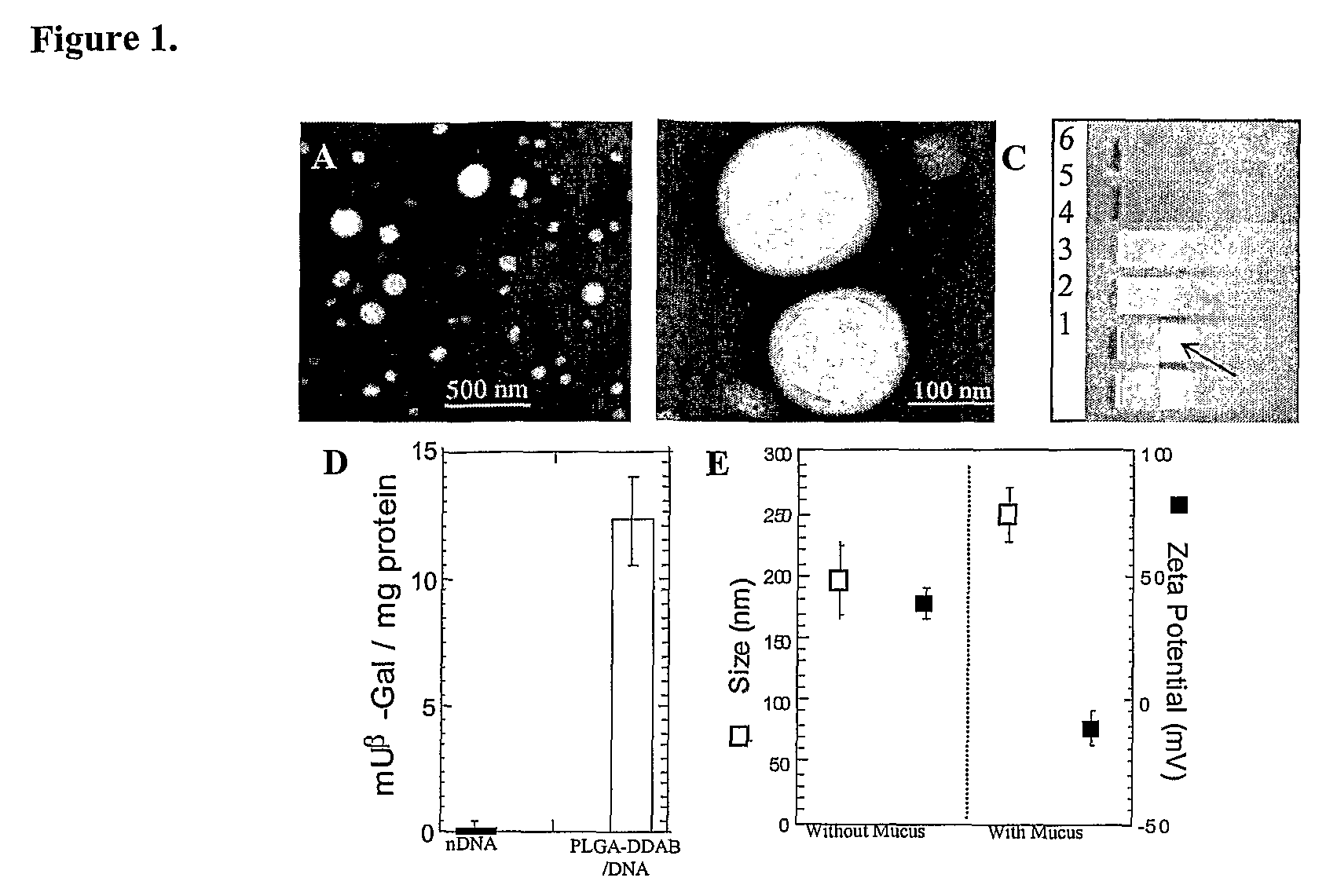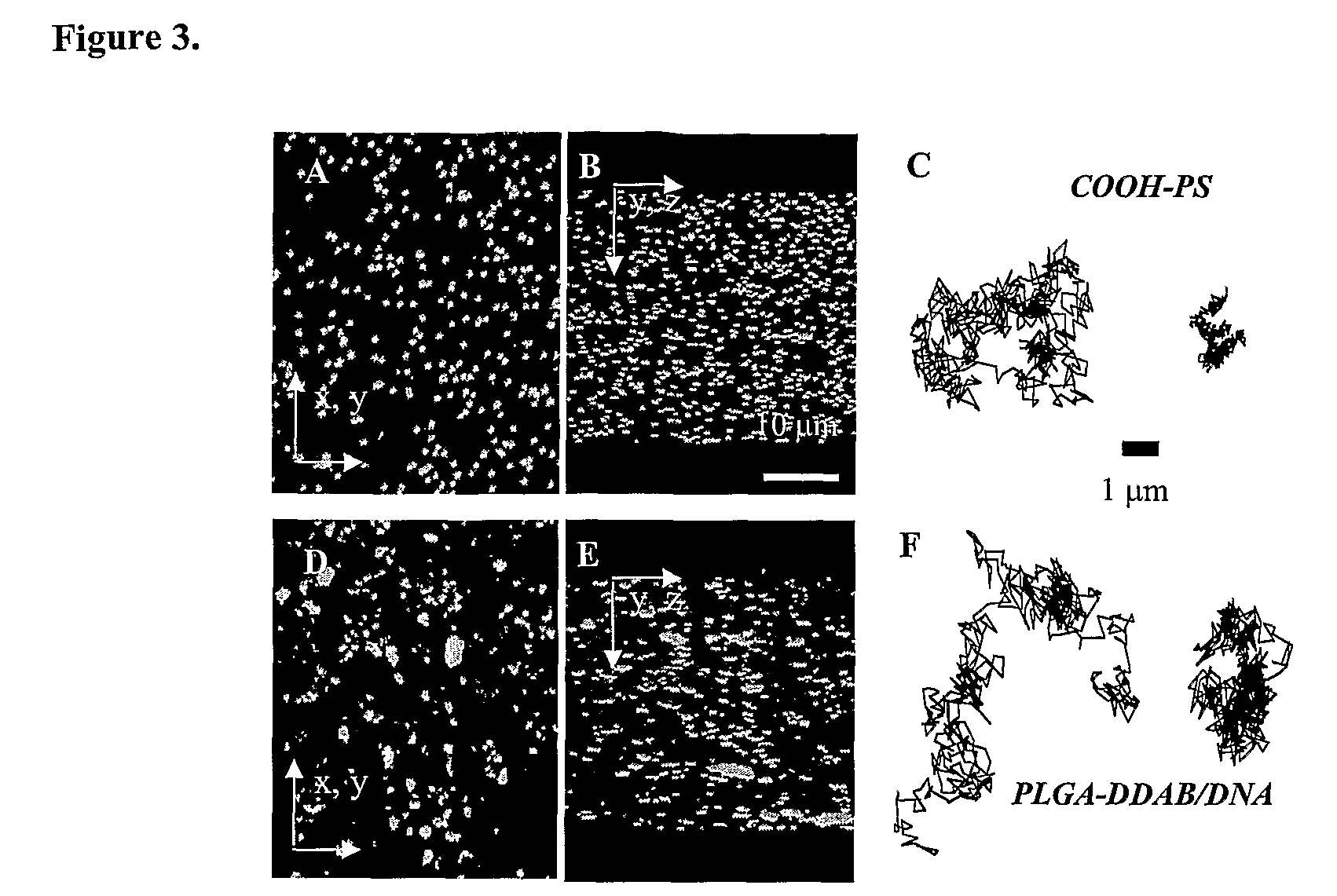Drugs and gene carrier particles that rapidly move through mucous barriers
a gene carrier and drug technology, applied in the direction of peptides, drug compositions, aerosol delivery, etc., can solve the problems of impede the transport rate of large macromolecules and nanoparticles, and achieve the effect of promoting adhesion or complexation
- Summary
- Abstract
- Description
- Claims
- Application Information
AI Technical Summary
Benefits of technology
Problems solved by technology
Method used
Image
Examples
Embodiment Construction
[0002]This invention was made with government support under grant number CTS0210718, awarded by the National Science Foundation. The government has certain rights in the invention.
BACKGROUND
[0003]The primary component of mucus is higher molecular weight mucin glycoproteins, which form numerous covalent and noncovalent bonds with other mucin molecules and various constituents, including DNA, alginate, and hyaluronan. Hanes et al., Gene therapy in the lung. in Pharmaceutical Inhalation Aerosol Technology, 2d ed.; Marcel Dekker Inc.: New York, 2003; pp. 489-539. Reconstituted mucus formulated from pig gastric, human cervical, and tracheobronchial mucins display similar mucus structures, with large rod or fiberlike aggregates of 5 nm in diameter and 100-5000 nm in length. Khanvilkar et al., Adv. Drug Deliv. Rev. 2001 48, 173-193. The condensed and complex microstructure of the mucus network gives rise to a highly viscoelastic gel, which significantly impedes the transport rates of large...
PUM
| Property | Measurement | Unit |
|---|---|---|
| molecular weight | aaaaa | aaaaa |
| diameter | aaaaa | aaaaa |
| diameter | aaaaa | aaaaa |
Abstract
Description
Claims
Application Information
 Login to View More
Login to View More - R&D
- Intellectual Property
- Life Sciences
- Materials
- Tech Scout
- Unparalleled Data Quality
- Higher Quality Content
- 60% Fewer Hallucinations
Browse by: Latest US Patents, China's latest patents, Technical Efficacy Thesaurus, Application Domain, Technology Topic, Popular Technical Reports.
© 2025 PatSnap. All rights reserved.Legal|Privacy policy|Modern Slavery Act Transparency Statement|Sitemap|About US| Contact US: help@patsnap.com



